Revision 6c38ebf6f9326fd2d7ebf1b95d9f73f684feb162 authored by Martin Schlather on 12 May 2004, 00:00:00 UTC, committed by Gabor Csardi on 12 May 2004, 00:00:00 UTC
1 parent b51fb7a
auxiliary.R
Dev <- function(on, dev, ps=NULL, cur.cex=TRUE, paper="special",
width=5, height=5, quiet=FALSE, ...){
## function to handle output device:
## on: T=output device is activated; F=device will be closed
## dev: device number or TRUE= postscript or FALSE=pdf
## or character (then the name is interpreted as function name)
## ps : postscript file name; only needed when dev is logical
##
## Dev takes over the par.options of previous plots
if (on) {
par.orig <- if (!is.null(dev.list())) par(no.readonly=TRUE) else NULL
if (exists(".dev.orig", envir=.GlobalEnv)) {
warning("Dev has been still open (.dev.orig exists). Closing.")
if (!is.null(try(Dev(FALSE, .dev.orig$dev))))
rm(.dev.orig, envir=.GlobalEnv)
}
if ((cur.cex <- cur.cex && !is.null(par.orig)) && !is.null(dev.list()))
par.orig <- par(no.readonly=TRUE)
par.orig$new <- par.orig$fin <- par.orig$mai <- par.orig$pin <-
par.orig$plt <- NULL
devPrev <- dev.cur()
if (is.logical(dev) || is.character(dev)) {
keep <- FALSE
if (is.null(ps)) stop("no name for the postscript file is given")
else {
if (is.logical(dev)) {
ext <- "eps"
exts <- c("ps", "eps", "pdf")
if (any(l <- (splt <- rev(strsplit(ps,"\\.")[[1]]))[1] == exts)){
dev <- !l[3]
ps <- paste(rev(splt[-1]), collapse=".")
ext <- exts[l][1]
}
if (dev) {
fn <- paste(ps,ext,sep=".")
postscript(fn, horizontal=FALSE, paper=paper, width=width,
height=height, ...)
} else {
fn <- paste(ps,".pdf",sep="")
pdf(fn, horizontal=FALSE, width=width, height=height, ...)
}
} else { # character
fn <- paste(ps,".", dev, sep="")
txt <- paste(dev,"('", fn, "',width=width,height=height,...)", sep="")
eval(parse(text=txt))
}
if (!quiet) cat("creating", fn, "\n")
# if (cur.cex) par(par.orig)
}
} else {
if (dev %in% dev.list()) dev.set(dev)
else {
# print(c(height, width))
stopifnot(is.finite(height+width))
get(getOption("device"))(height=height, width=width)
}
keep <- dev < 3
}
assign(".dev.orig",
list(dev.prev=devPrev, dev.cur=dev.cur(), keep=keep),
envir=.GlobalEnv)
} else { # off
if (!exists(".dev.orig", envir=.GlobalEnv)) stop("Dev is not open")
if (dev.cur() != .dev.orig$dev.cur) {
warning("Dev is not the currently active device")
dev.set(.dev.orig$dev.cur)
}
if (length(dev.list())>0)
if (.dev.orig$keep) par(new=FALSE) else dev.off()
dev.set(.dev.orig$dev.prev)
rm(.dev.orig, envir=.GlobalEnv)
}
invisible(NULL)
};
hostname<-function(){.C("hostname", h=paste(seq(0,0,l=100), collapse=""),
as.integer(100), PACKAGE="RandomFields")$h}
pid <- function() {.C("pid", i=integer(1), PACKAGE="RandomFields")$i}
FileExists <- function(file, PrintLevel=RFparameters()$Print) {
## for parallel simulation studies: the same data output file should not
## be created twice. So:
## 1. if file exists then assume another process has done the work already
## 2. if file.lock existss then assume another process is doing the work
## 3.a. otherwise create file.lock to show other processes that the process
## is going to do the work
## 3.b. check if another process has started with the same work at the same
## time it may happen that in case of simulatenous creation of file.lock
## no process will do the work...(then the lock file will rest.)
lock.ext <- ".lock";
if (file.exists(file)) { #1.
if (PrintLevel>1) cat("'", file, "' already exists.\n");
return(1)
} else {
LockFile <- paste(file, lock.ext, sep="")
if (file.exists(LockFile)) { #2.
if (PrintLevel>1) cat("'",file,"' is locked.\n");
return(2);
}
PID<-pid();
## to do : dir<-strsplit(file,"/") ## check if directory exists !!
## otherwise write will fail.
write(file=LockFile,c(PID,hostname()),ncolumns=2,append=TRUE); #3.a.
Pid <- matrix(scan(LockFile,what=character(0)),nrow=2)
if ((sum(Pid[1,]==PID)!=1) || (sum(Pid[1,]>PID)>0)){ #3.b.
if (PrintLevel>1) cat("Lock file of '", file, "' is knocked out.\n");
return(3);
}
}
return(0);
}
LockRemove <- function(file) {
## removes auxiliary files created by FileExists
lock.ext <- ".lock";
system(paste("rm -f ",file,lock.ext,sep=""))
}
plotWithCircles <- function(data, factor=1.0,
xlim=range(data[,1])+c(-maxr,maxr),
ylim=range(data[,2])+c(-maxr,maxr),
col=1, fill=0, ...) {
## marked point process: presents positive values of data as radii of circles
CIRCLE.X <- cos(seq(0,2*pi,l=20))
CIRCLE.Y <- sin(seq(0,2*pi,l=20))
circle <- function(x,r) { polygon(x[1]+ r* CIRCLE.X,x[2]+ r* CIRCLE.Y,
col=fill, border=col) }
##r <- x$NormedData - min(x$NormedData) +1
##r <- r/max(r)/nrow(x$coord) * diff(xlim) * diff(ylim) * 2.5;
maxr <- max(data[,3])
plot(Inf, Inf, xlim=xlim, ylim=ylim, xlab="", ylab="",...)
for (i in 1:nrow(data)) { circle(data[i,c(1,2)], factor*data[i,3]) }
}

Computing file changes ...
